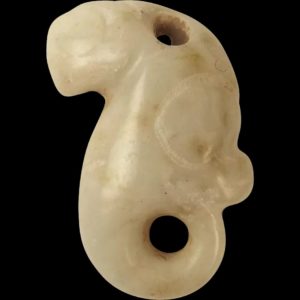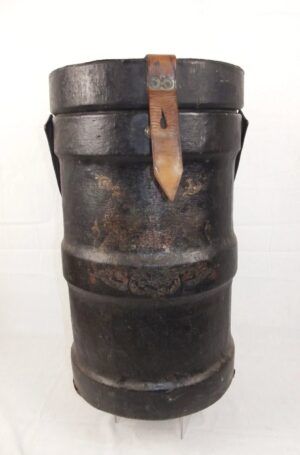*British, WW2, Civil Defence Stirrup Pump Fire Hose*
Before the Second World War, British people feared that any future war would involve heavy aerial bombing of civilian areas. In December 1937, the British government passed the Air Raid Precautions (or ‘ARP’) Act, requiring local authorities to ready themselves in case of air attack. To deal with the outbreak of small fires and incendiary bombs a number of pieces of equipment were available to Civil Defence personnel and the general public. One of the most crucial items was the Stirrup Pump. It may have saved St. Paul’s Cathedral and allowed Herbert Mason to take the most iconic photo of the Blitz.
The stirrup pump could be used against a burning incendiary bomb and also deal with small-scale fires (usually caused by incendiary bombs). Stirrup pumps were extremely common items of equipment and one pump per 30 houses or 150 yards of street were allocated. Wardens’ Posts always had a stirrup pump available.
A three-man stirrup pump team consisted of the following:
No 1 carried and aimed the stirrup pump at the fire (and also carried a torch, an ARP 55 axe and a whistle);
No 2 operated the pump; and
No 3 carried two water buckets, one for use as a reservoir for the pump and the second for transporting water.
A team could pump 1.5 gallons of water a minute. It took up to six gallons of water to extinguish a single 1 kg incendiary bomb.
*Condition*
Excellent used condition. Please see photographs as part of the condition report.
JAQDOXFE_7895164220


























